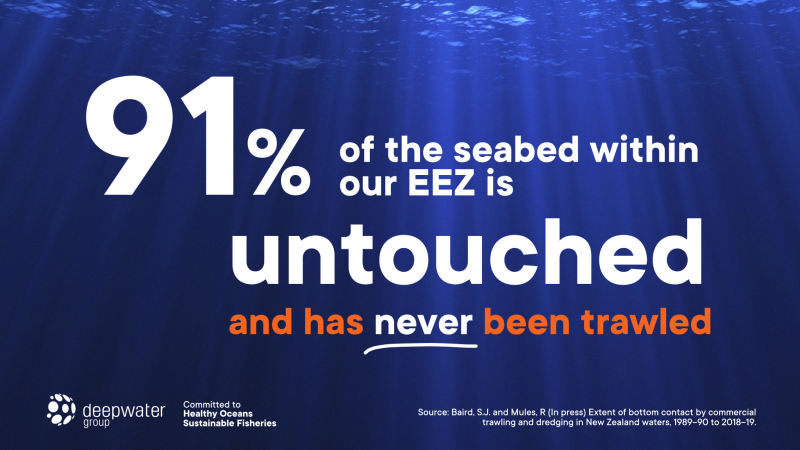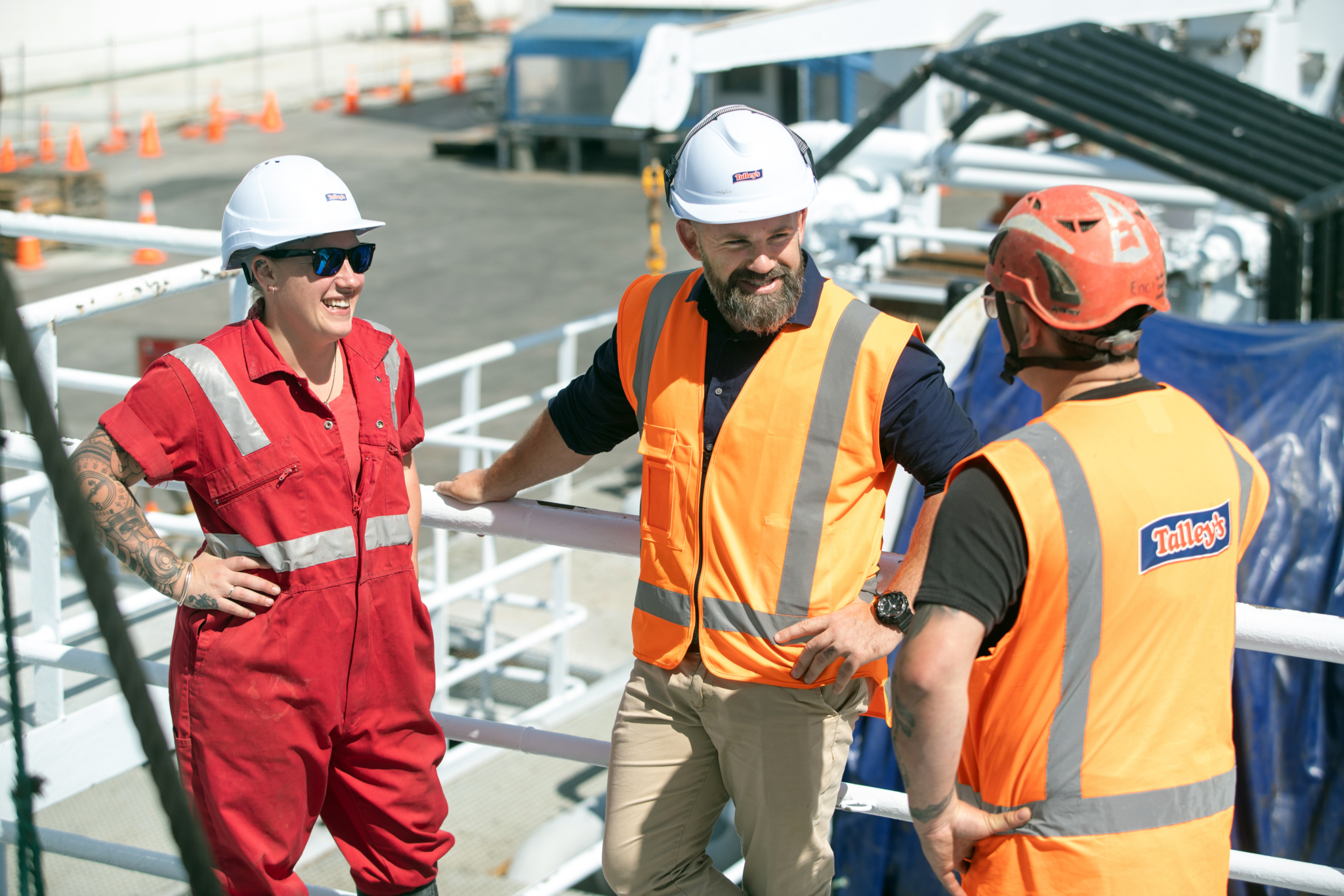Seafood
Talley’s people are proud to sustainably catch a large range of fish species, providing nutritious, healthy seafood to New Zealanders and people around the world.
New Zealand’s marine wilderness is home to over 15,000 species of fish, marine mammals, seabirds and other animals, plants and algae. Our EEZ (Exclusive Economic Zone) and territorial sea are vast, being over four million square kilometres large.
Talley’s dedicated inshore and deep sea fishing fleet, use the latest technology to sustainably fish in these waters and in the high seas, so we can supply the largest range of fish to consumers, for life.
Our ocean-to-plate fishing practices mean we can tell you exactly where your seafood came from, when it was caught, and how it got to you. We catch, process and distribute our fish to shore faster and fresher, guaranteeing you high-quality seafood.
Fishing sustainably
Aotearoa New Zealand takes the health and sustainability of our oceans seriously. The way we manage our bountiful fisheries is praised internationally, and independent global studies regularly place our country in the top rankings for fisheries management. Talley’s fishers regard the oceans as their home, so they want to fish it sustainably, so it is there for life.
Our industry invests more than $24 million annually towards the Government’s extensive fisheries and oceans scientific research. We invest in robust research because it is critical to properly understanding the vast ocean environment and to maintain a sustainable commercial fishing industry.
Talley’s is proud to be part of a fishing management system underpinned by science, because that ensures our fish stocks and fisheries remain sustainable. It also means that our valued customers can buy the seafood they love with confidence.
Loving New Zealand’s rich variety of tasty, healthy fish, nine out of ten New Zealander’s personally buy seafood from supermarkets and other outlets each week.
The Quota Management System ensures New Zealand’s fisheries are sustainable. In the new generation of fishing, Fishing for Life is at the heart of what Talley’s does when we are on the oceans. For us this means:
- Protecting the life and diversity of the marine environment
- Sustainably harvesting fish stocks, to ensure abundance for future generations
- Providing people with clean, healthy seafood protein full of natural goodness for a healthy life
- Training and supporting Kiwis in their fishing careers, for their and their communities’ livelihoods.
Bottom trawling
How bottom trawling works
Bottom trawling is New Zealand’s most common fishing method because our seas are home to a range of plentiful fish that live just above the surface of the seabed. Bottom trawling accounts for up to 85% of New Zealand’s domestic harvest and incorporates flatfish, gurnard, red cod, snapper, tarakihi, school shark, rig, blue warehou, to name a few. The nature of New Zealand’s domestic fisheries are that we have such a variety of inshore stocks throughout our regions that they cannot all be caught by alternative methods like long-lining or set-netting.In many other countries’ fishing zones, the fish live in the middle layer of the sea rather than near the bottom, so bottom trawling is less common elsewhere in the world.
Bottom trawling is when we tow one or two nets near or on the bottom of the seabed in very defined, pre-fished areas. Talley’s deepwater fleet harvests catch hoki, orange roughy, oreo dory, squid and southern blue whiting this way.
Regulating bottom trawling
Bottom trawling is highly regulated and over the last three decades, the fishing grounds have significantly decreased, as we work with the Government to ensure fishing can live alongside sustainability efforts. New Zealand bottom trawling is not far-reaching, occurring within 0.3% of the South Pacific Regional Fisheries Management Organisation’s high seas, and less than 5% of the EEZ (New Zealand’s waters) and territorial sea combined.
Overall, 90% of New Zealand’s EEZ has never been bottom trawled and a third of our territorial waters are completely closed to bottom trawling. The science shows that there is plenty of fish in the areas we have been before, so there is no need to move into other untouched waters.
Our fishing is limited to wild fish species managed under the Quota Management System, with everything we catch reported and balanced against our quota.

Deep sea
We have over 500 people working on our five deep sea vessels.
The deep sea is the lowest layer in the ocean, just above the sea floor, where we catch five managed species – hoki, orange roughy, oreo, squid, and southern blue whiting. A species that is ‘managed’ means that it is studied annually, and there is a limit to the amount we can catch under the NZ Quota Management System. This system ensures there are enough fish of each species in the wild to keep reproducing, enabling both commercial and recreational fishing.
Two of our “frozen at sea” vessels also fish in Australia for an Australian fishing company, with another fishing in the Antarctic region.
All our vessels are monitored and operations verified to ensure compliance with regulations and industry-agreed operating procedures.

Cool facts about Deep Sea fisheries
Inshore
Talley’s supports a fleet of more than 80 independently owned and operated in-shore vessels and their families, who fish throughout the South Island, and parts of the lower North Island on behalf of Talley’s. These in-shore trawlers harvest a mix of 30+ types of fish, most of which are sold in New Zealand.
As changes have been made to fishing practices and regulations, the number of in-shore boats and the areas in which commercial fishers trawl has decreased significantly over the last three decades, the past 10 years in particular. The in-shore fleet is a third of what it was 10 years ago.
© Talley's 2025 • Web design and development by Plato
